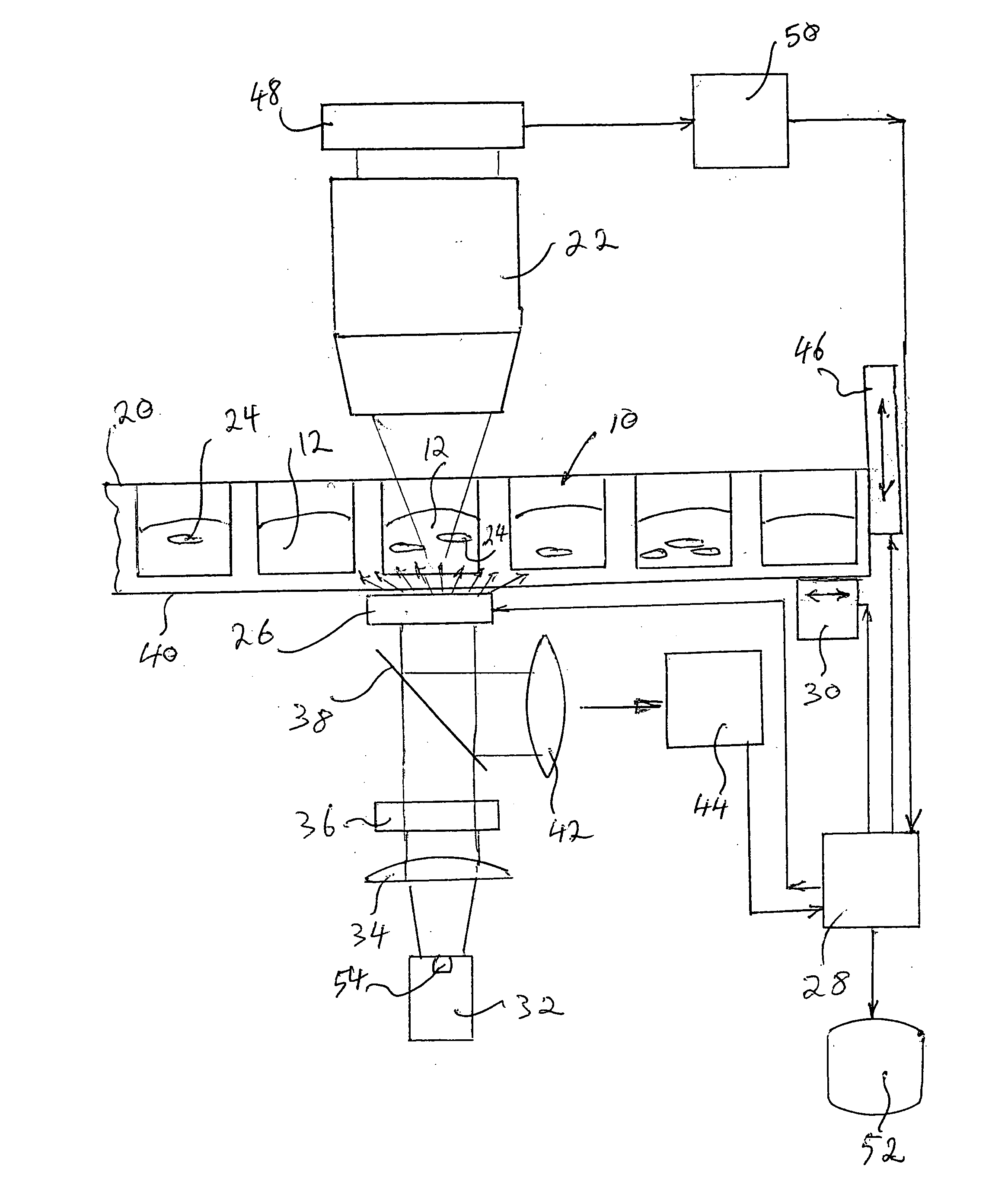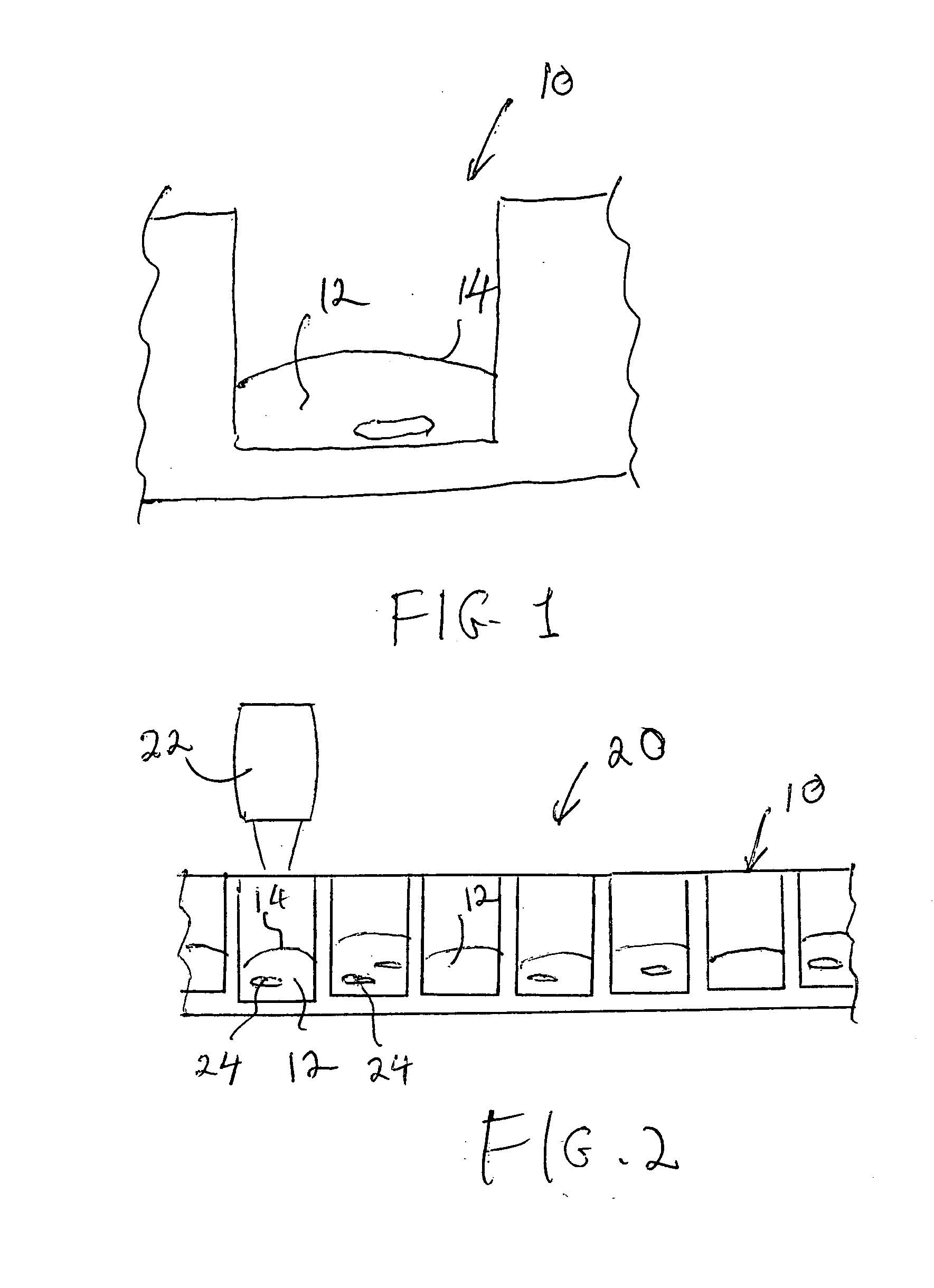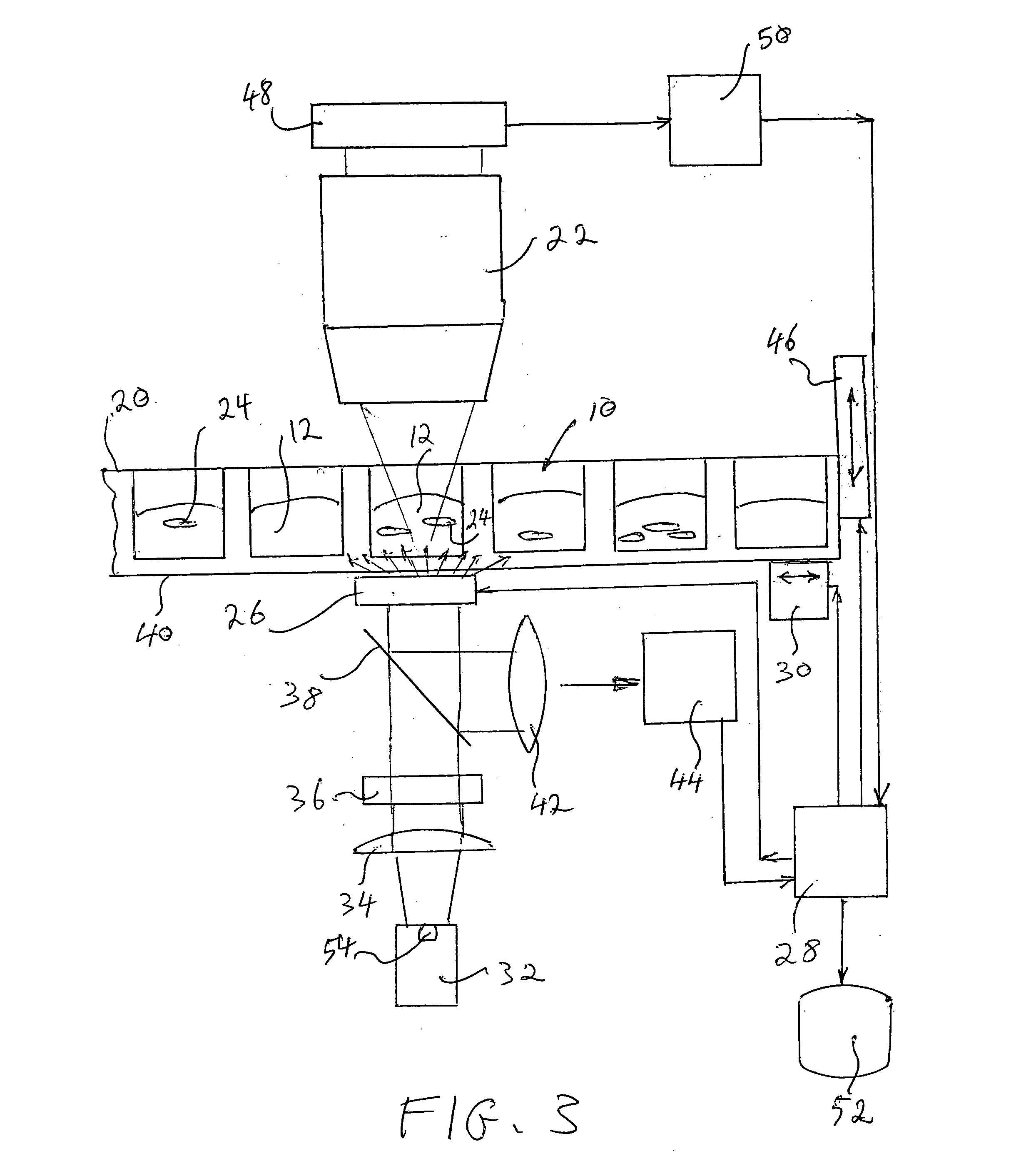Crystal detection with scattered-light illumination and autofocus
a technology of autofocus and crystal detection, applied in the field of optical microscopes, can solve the problems of noisy images, large loss of light, and substantially greater illumination intensities,
- Summary
- Abstract
- Description
- Claims
- Application Information
AI Technical Summary
Benefits of technology
Problems solved by technology
Method used
Image
Examples
Embodiment Construction
[0019] The inventive aspect of this disclosure lies in the idea of using an intermittent scatter plate in the optical axis of illumination of a microscope used for high-throughput testing of multi-well trays. The intermittent light-scatter function provided by the plate allows the alternate bright-field illumination required for the operation of conventional autofocusing mechanisms and the scatter-light illumination required for uniform imaging of the entire well. In addition, the fact that both modes of illumination may be implemented from the same side of the sample tray provides construction, maintenance and operational advantages over prior-art microscope systems used for rapid sample screening.
[0020] Referring to the drawings, wherein like parts are designated throughout with like numerals and symbols, FIG. 2 illustrates in schematic cross-sectional view a multi-well plate 20 used to carry out high-throughput screening of protein crystal samples according to the invention. Eac...
PUM
 Login to View More
Login to View More Abstract
Description
Claims
Application Information
 Login to View More
Login to View More - R&D
- Intellectual Property
- Life Sciences
- Materials
- Tech Scout
- Unparalleled Data Quality
- Higher Quality Content
- 60% Fewer Hallucinations
Browse by: Latest US Patents, China's latest patents, Technical Efficacy Thesaurus, Application Domain, Technology Topic, Popular Technical Reports.
© 2025 PatSnap. All rights reserved.Legal|Privacy policy|Modern Slavery Act Transparency Statement|Sitemap|About US| Contact US: help@patsnap.com



